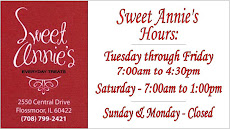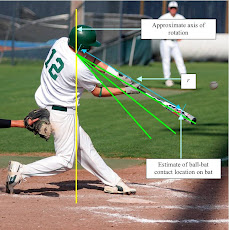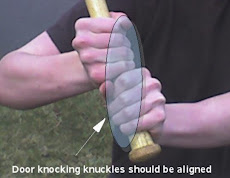.
.....................(Baseball and Softball)
..........................By Tony Scoglio
Practicing baseball or softball using visualization or imagery prepares the mind and body for optimum performance every serious competitor needs to develop.
Curiously the central nervous system and the brain do not differentiate on whether we are actually performing a skill or visualizing it in our minds. Visualization/imagery is a mental tool that sharpens all your senses, improving mind and muscle memory to accomplish any desired goal. It is of no small benefit when you lie in bed in the dark, consciously focusing your mind on a desired process and outcome; going over again in the imagination the generalities and intricacies of what you are trying to master. The best part is you can practice anywhere you can relax; in bed, sitting in a chair, while meditating at the dentist's office (good luck with that!) or even during a trip, as long as your not doing the driving.
To support this premise:
“Dr. Charles Garfield, former NASA researcher and president of The Performance Science Institute in Berkeley CA wrote the book, Peak Performance: Mental Training Techniques of the World's Greatest Athletes. As a result, Dr Garfield was selected by the United States Olympic Committee as a keynote speaker for the esteemed Elite Coaches Symposium, addressing the head coaches of our Olympic sports. Of relevance, here is a study to which Dr Garfield referred. That study examined the effect of mental training, including visualization/imagery, on four groups of world-class athletes just prior to the 1980 Lake Placid, New York Olympics. The four groups of elite athletes were divided as follows:
..........................By Tony Scoglio
Practicing baseball or softball using visualization or imagery prepares the mind and body for optimum performance every serious competitor needs to develop.
Curiously the central nervous system and the brain do not differentiate on whether we are actually performing a skill or visualizing it in our minds. Visualization/imagery is a mental tool that sharpens all your senses, improving mind and muscle memory to accomplish any desired goal. It is of no small benefit when you lie in bed in the dark, consciously focusing your mind on a desired process and outcome; going over again in the imagination the generalities and intricacies of what you are trying to master. The best part is you can practice anywhere you can relax; in bed, sitting in a chair, while meditating at the dentist's office (good luck with that!) or even during a trip, as long as your not doing the driving.
To support this premise:

“Dr. Charles Garfield, former NASA researcher and president of The Performance Science Institute in Berkeley CA wrote the book, Peak Performance: Mental Training Techniques of the World's Greatest Athletes. As a result, Dr Garfield was selected by the United States Olympic Committee as a keynote speaker for the esteemed Elite Coaches Symposium, addressing the head coaches of our Olympic sports. Of relevance, here is a study to which Dr Garfield referred. That study examined the effect of mental training, including visualization/imagery, on four groups of world-class athletes just prior to the 1980 Lake Placid, New York Olympics. The four groups of elite athletes were divided as follows:
Group 1 did 100% physical training to prepare for the Olympic Games.
Group 2 did 75% physical training, 25% mental training.
Group 3 did 50% physical training, 50% mental training.
Group 4 did 25% physical training, 75% mental training.
What the researchers found was that group 4, the group with the most mental training had shown significantly greater improvement than ANY OF THE OTHER GROUPS, followed by groups 3, 2, and 1, in that order. The results were that athletes training mentally [using visualization / imagery techniques] were able to advance further than their counterparts who were training primarily with the main focus on physical preparation.
Garfield, who has spent hundreds of hours interviewing athletes and sports researchers around the world, says that many elite athletes have incorporated sophisticated imagery tech niques into their athletic programs and believe mental images act as precursors in the process of generating neuromuscular impulses. Garfield believes imagery works because movement is recorded holographically in the brain. In his book Peak Performance: Mental Training Techniques of the World’s Greatest Athletes, he states, “The images are holographic and function primarily at the subliminal level. The holographic imaging mechanism enables you to quickly solve spatial problems such as assembling a complex machine, choreographing a dance routine, running visual images of plays through through your mind” [or hitting a baseball or softball].
niques into their athletic programs and believe mental images act as precursors in the process of generating neuromuscular impulses. Garfield believes imagery works because movement is recorded holographically in the brain. In his book Peak Performance: Mental Training Techniques of the World’s Greatest Athletes, he states, “The images are holographic and function primarily at the subliminal level. The holographic imaging mechanism enables you to quickly solve spatial problems such as assembling a complex machine, choreographing a dance routine, running visual images of plays through through your mind” [or hitting a baseball or softball].
“Australian psychologist Alan Richardson has obtained similar results with basket ball players. He took three groups of basketball players and tested their ability to make free throws.” In one study, an experiment was performed using three control groups where basketball players attempted to improve their free throw shooting skills. One group practiced free-throw shots for a half-hour every day. Another group was told not to practice. A third control group practiced thirty minutes a day but only in their imaginations. "In their mind's eye, they would see themselves standing at the free-throw line holding the ball." They would see the basket and feel the body movements of making a perfect shot. At the end of a week, the players were retested. The players who were told not to practice showed no improvement as expected. But surprisingly those who had practiced only in their imaginations had improved significantly more than the players who had practiced with a real ball every day.
This isn't to suggest that thinking about it is better than actually performing. You still have to physically condition the body and train the mind with muscle groups to perform the proper sequence of movement. That can only be accomplished through actual experience, under a coach's observation, instruction and encouragement. But as a tool, visualization/imagery is a great supplement to physical training and for reaching beyond the limitations we put on ourselves.
 niques into their athletic programs and believe mental images act as precursors in the process of generating neuromuscular impulses. Garfield believes imagery works because movement is recorded holographically in the brain. In his book Peak Performance: Mental Training Techniques of the World’s Greatest Athletes, he states, “The images are holographic and function primarily at the subliminal level. The holographic imaging mechanism enables you to quickly solve spatial problems such as assembling a complex machine, choreographing a dance routine, running visual images of plays through through your mind” [or hitting a baseball or softball].
niques into their athletic programs and believe mental images act as precursors in the process of generating neuromuscular impulses. Garfield believes imagery works because movement is recorded holographically in the brain. In his book Peak Performance: Mental Training Techniques of the World’s Greatest Athletes, he states, “The images are holographic and function primarily at the subliminal level. The holographic imaging mechanism enables you to quickly solve spatial problems such as assembling a complex machine, choreographing a dance routine, running visual images of plays through through your mind” [or hitting a baseball or softball].“Australian psychologist Alan Richardson has obtained similar results with basket ball players. He took three groups of basketball players and tested their ability to make free throws.” In one study, an experiment was performed using three control groups where basketball players attempted to improve their free throw shooting skills. One group practiced free-throw shots for a half-hour every day. Another group was told not to practice. A third control group practiced thirty minutes a day but only in their imaginations. "In their mind's eye, they would see themselves standing at the free-throw line holding the ball." They would see the basket and feel the body movements of making a perfect shot. At the end of a week, the players were retested. The players who were told not to practice showed no improvement as expected. But surprisingly those who had practiced only in their imaginations had improved significantly more than the players who had practiced with a real ball every day.
This isn't to suggest that thinking about it is better than actually performing. You still have to physically condition the body and train the mind with muscle groups to perform the proper sequence of movement. That can only be accomplished through actual experience, under a coach's observation, instruction and encouragement. But as a tool, visualization/imagery is a great supplement to physical training and for reaching beyond the limitations we put on ourselves.
We can all use our imaginations to maximize performance, be it hitting a ball or delivering a speech. To make your imagination work for you, you must actually see yourself in your mind performing with perfect execution what you're trying to master. It's a disciplined mental rehearsal seeing only what you want, not what you don't want. To maximize the benefit imagine yourself performing in the role you're trying to master for twenty to thirty minutes each day. Start out with five minutes and progressively extend the periods. Keep in mind that using this technique will also cement poor mechanics as well, so get a good instructor.
How can these short mental exercises help? "This isn't like your physical training and/or practice, that can go on for hours. The short answer is you are using techniques to train the mind. Longer is not better, it's the precision of the process not the length of time that's most important."
.
For more information on baseball and softball powers of visualization click on the following sites: Mind Training.Net and About.com: Sports Medicine
Sources:
"How to think like Leonardo da Vinci", by Michael J. Gelb
"Mysteries of the mind", by Henry Reed, Ph.D
"Peak Performance", by Charles Garfield, Ph.D
"Psycho-cybernetics", by Maxwell Maltz, M.D.
“The Holographic Universe”, by Michael Talbot
.
For more information on baseball and softball powers of visualization click on the following sites: Mind Training.Net and About.com: Sports Medicine
Sources:
"How to think like Leonardo da Vinci", by Michael J. Gelb
"Mysteries of the mind", by Henry Reed, Ph.D
"Peak Performance", by Charles Garfield, Ph.D
"Psycho-cybernetics", by Maxwell Maltz, M.D.
“The Holographic Universe”, by Michael Talbot
............................For information about professional instruction contact:
...............................Tony Scoglio, Instructor and Program coordinator
.........................Direct line: (708) 990-9000. . . Email: tscoglio@gmail.com
...............................Tony Scoglio, Instructor and Program coordinator
.........................Direct line: (708) 990-9000. . . Email: tscoglio@gmail.com
..............................._______________________________________________________________












No comments:
Post a Comment